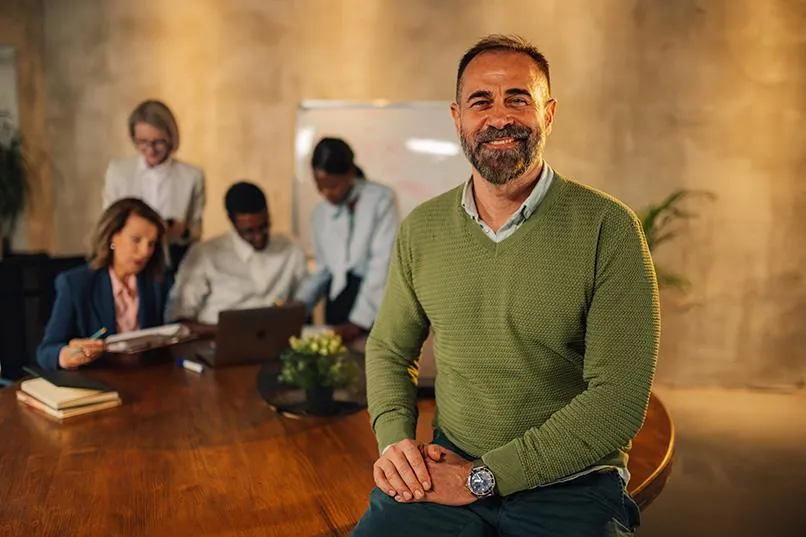
The Founder’s Recovery Playbook: Rest as a Competitive Advantage
In today’s business landscape, grind culture still dominates the entrepreneurial narrative. Founders are praised for all-nighters, 18-hour workdays, and relentless pursuit of growth. Yet, behind the scenes of the most enduring companies, a new pattern emerges—one where rest, renewal, and rhythm replace burnout as the cornerstone of performance.
Welcome to The Founder’s Recovery Playbook, where rest isn’t a luxury. It’s a competitive advantage.
1. Understanding Adaptive Resilience
At its core, adaptive resilience is the ability not just to bounce back from adversity but to grow stronger because of it.
Entrepreneurs live in a world of uncertainty—product failures, investor rejections, market pivots. What separates sustainable founders from exhausted ones isn’t the number of challenges they face, but how they interpret and metabolize stress into strength.
This process is driven by two cognitive tools: reframing and emotional regulation—the twin pillars of resilient leadership.
2. Cognitive Reframing: Turning Failures into Fuel
When a setback occurs, most founders react instinctively—fight, fix, or flee. But great leaders pause and reframe. Cognitive reframing involves consciously shifting your interpretation of an event from “this is failure” to “this is feedback.”
For example, when Tesla struggled with Model 3 production bottlenecks, the company didn’t retreat—it innovated. Those challenges sparked new automation systems and factory redesigns that now define its operational excellence.
This same principle applies to founders everywhere: what you label determines what you learn.
Founder’s Exercise:
Hold weekly reflection sessions with your leadership team. Instead of “what went wrong,” ask:
“What did this experience reveal about our process?”
“What are we now equipped to handle that we weren’t before?”
Reflection reframes setbacks as strategic data, strengthening your organization’s adaptive muscles.
3. Emotional Regulation: Maintaining Clarity Under Pressure
Emotional regulation is the foundation of leadership composure. When pressure mounts, clarity is currency.
High-performing founders know how to maintain mental precision even when emotions surge. Techniques such as box breathing (4-4-4-4), mindful labeling (“I’m feeling anxious, not overwhelmed”), or guided meditation help keep the nervous system in check.
By decoupling identity from outcome—“I failed” versus “that experiment failed”—leaders prevent burnout and preserve focus.
Actionable Rituals:
Begin high-stress meetings with one minute of collective breathing.
Add short mindfulness sessions to weekly team syncs.
Schedule 10-minute digital detox breaks between critical decision blocks.
These micro-recovery habits compound into macro clarity.
4. Strategic Recovery Rituals for Sustained Performance
True recovery is not random downtime—it’s structured restoration.
Just as elite athletes have rest phases, founders need strategic recovery rituals that sharpen decision-making and sustain innovation.
Daily Micro-Rests
Take 5-minute resets every 90 minutes. Step outside, hydrate, stretch, or simply breathe.
Protect “white space” in your calendar for spontaneous thinking.
Weekly Resets
Dedicate one day weekly to non-work creative activity—art, hiking, volunteering.
This mental defocus promotes cross-connection in the brain, the birthplace of big ideas (remember Newton’s apple moment).
Monthly Escapes
Plan one technology-free weekend or mini-retreat per month.
Founder cognition thrives on contrast—silence after stimulation, solitude after scaling.
By aligning recovery with natural energy cycles, founders achieve consistent peak performance without emotional depletion.
5. Proactive Recovery Management: Leading Beyond Endurance
Many entrepreneurs treat recovery as an emergency response—something to fix when burnout hits.
But proactive recovery management transforms it into a growth system, not a rescue mission.
Build a Support Network
No founder scales alone. A circle of mentors, peers, and advisors provides both accountability and perspective. This ecosystem acts as a stabilizer during turbulence—offering strategic clarity and emotional grounding.
Pro Tip:
Form a small mastermind group (5–7 members) of founders from different industries. Meet monthly to share lessons, struggles, and progress. This cross-industry exchange fuels both creativity and balance.
Use Technology Wisely
Recovery can be engineered with the right digital allies:
Headspace for guided meditation and focus.
Sleep Cycle for tracking rest quality.
RescueTime to visualize your work-rest ratio.
When used intentionally, tech becomes a guardian of wellness, not a thief of attention.
6. The Science Behind Rest as a Performance Multiplier
Recent research from Harvard Business Review and Stanford Business School shows that founders who integrate recovery cycles outperform peers in innovation and revenue growth.
A Stanford 2024 study found that leaders with structured downtime improved cognitive flexibility by 24%.
Founders who reported “intentional rest” scored 34% higher in creative problem-solving and reduced decision fatigue by half.
Rest doesn’t slow momentum—it compounds it.
7. From Survival to Strategic Renewal
Recovery isn’t about slowing down; it’s about synchronizing output with input.
It’s about knowing when to press forward and when to recharge so that your leadership stays effective, decisive, and human.
The Founder’s Recovery Playbook isn’t about self-care fluff. It’s about protecting the operating system behind your company’s growth—your brain, emotions, and body.
By practicing adaptive resilience, reframing challenges, and managing recovery as deliberately as you manage KPIs, rest becomes your next major growth lever.
Conclusion: Rest as the New ROI
Rest is no longer the opposite of work—it’s a multiplier of it.
When you see recovery as a business strategy, your energy, clarity, and adaptability expand.
The future belongs to founders who can pause with purpose, not just push with pressure.
So, the next time you schedule a board meeting, block out your recovery time too. That’s not weakness. That’s strategic endurance.
The Founder’s Recovery Playbook: Rest as a Competitive Advantage
Download this practical guide by David Rivero to learn how adaptive resilience, structured recovery rituals, and cognitive reframing can elevate your leadership performance—and turn rest into your sharpest competitive edge.
Download The Founder’s Recovery Playbook – PDF
Feeling close to burnout or decision fatigue?
Get clarity and structure back with David Rivero’s Strategic Founder Framework—a personalized system for sustained growth, balance, and execution.
Book a Private Strategy Session
FAQs
1. What is adaptive resilience, and why does it matter for founders?
Adaptive resilience is the skill of growing stronger through adversity. It helps founders stay resourceful under uncertainty and turn challenges into growth opportunities.
2. How does rest increase innovation and execution?
Strategic rest recharges cognitive functions—creativity, focus, and emotional stability—enabling founders to make sharper, more innovative decisions.
3. What’s the difference between rest and recovery?
Rest is a temporary pause; recovery is a deliberate, structured system that rebuilds energy and mental clarity over time.
4. How can founders integrate recovery into busy schedules?
Use micro-breaks, weekly resets, and monthly escapes. Protect these slots as fiercely as investor calls—they fuel long-term output.
5. Does science really support rest as a performance advantage?
Yes. Studies from Harvard, Stanford, and Deloitte confirm that structured recovery improves innovation, adaptability, and leadership performance across all founder archetypes.
